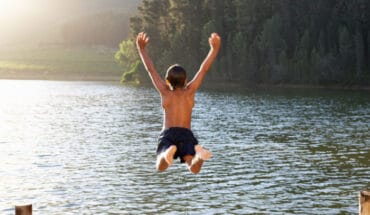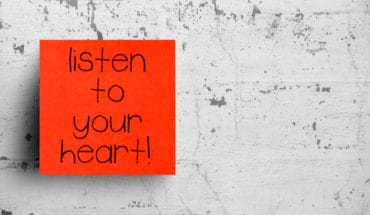Sadly fireworks are increasingly being deployed as weapons and this has led Greater Manchester’s police chief to call for a ban on fireworks being sold to the general public, in a bid to stop teenagers terrorising their communities.
Chief constable, Ian Hopkins, stated that police and fire services struggle to cope due to incidents caused by fireworks. There has been a rise in such incidents in our part of London too. For instance, with school children being targeted as they play football on the common and people being threatened and mugged using fireworks as the weapon. Fireworks have also been thrown at cyclists and motorcyclists.
Fireworks can be dangerous and need to be treated with care. Even when people intend to use fireworks responsibly, there are many accidents every year involving fireworks.
Statistics
NHS statistics reveal 4,506-people visited A&E from 2014-15 for treatment of a firework-related injury.
The last detailed research for Bonfire Night showed 990 injuries caused by fireworks in October and November. Of these 990:
- 494 were children who were hurt by sparklers
- 479 people needed hospital treatment from fireworks
- 475 of them occurred at family events or private parties
- 285 of them were eye injuries
The most common injuries on Bonfire Night are burns, debris in the eye from the bonfire or from fireworks and smoke inhalation as well as sprains and strains from tripping in the dark.
Therefore it makes sense to stock up beforehand with the following:
- well-equipped first aid kit
- bucket of sand to put out fireworks safely, easy access to plenty of water and a fire blanket
- sterile saline to irrigate eyes if sparks are blown into them.
How to enjoy fireworks safely
The safest way to enjoy fireworks is at an organised, regulated display, however if you are planning to host a firework display in your home be sure to follow the Fireworks Code.
Remember too that of 90% of firework parties held at home, alcohol is present. Therefore, it is a good idea to nominate someone who isn’t drinking to be in charge of the bonfire and setting off the fireworks.
- Never return to a firework that has not gone off; keep everyone, especially young children far away from the site of ignition.
- Only buy fireworks that conform to British Standard number (BS 7114)
- Ensure they are suitable for the size of your garden.
- Keep your fireworks in a closed metal box, removing them one at a time. Never keep them in your pocket.
- Read the instructions on the firework by torchlight not by naked flame.
- Light fireworks at arms length, using a taper.
- Have a rigid board or base for flat-bottomed fireworks.
- Don’t return to a lit firework.
- Never throw a used firework on the bonfire.
- Direct fireworks well away from spectators and ideally people should watch from inside.
- It is illegal to light fireworks after 11pm.
Bonfires
- Build the bonfire away from buildings, trees, wooden fences and children’s play areas.
- Ensure the bonfire is solidly built with a stable base.
- Don’t light the bonfire with paraffin or petrol.
- Do check the bonfire for hiding pets or wild animals before it is lit.
- Do make sure the fire is properly out when you are finished. Put water on the embers.
- Have copious amounts of water readily on hand for any accidents.
Sparklers
- Sparklers can be lots of fun, however they can get up to six times as hot as a pan of cooking oil or as hot as a welder’s torch so have the potential to cause some serious damage.
- Children under 5 years old should not be allowed to use sparklers and children older than this should be supervised at all times, ensuring they remain a safe distance away from others.
- Be particularly careful with children in fancy dress, as costumes are rarely fire resistant.
- Light sparklers one at a time and always wear gloves.
- Never run with sparklers and make sure you don’t wave them too close to others.
- Hold the sparklers horizontally as far away from your face and body as possible.
- Put spent sparklers in a bucket of cold water or sand.
No matter how careful or prepared you are, injuries can still happen. The following first aid advice covers the most common eventualities.
Minor burns
- Where the burnt area is larger than the size of the casualty’s hand, you should phone for an ambulance immediately.
- Hold the affected area under cold, running water for a full 20 minutes.
- Special care should be taken if the burn is on a young child or an elderly person.
- All deep burns of any size will require urgent hospital treatment.
- After cooling the burn for at least 15 minutes, cover it with cling film or a burns dressing. However, if the burn is on a hand, insert it into a sterile plastic bag.
- Never rush to dress a burn. The most important treatment is to cool the burn under cool running water.
- All burns should be assessed by medical professionals.
If clothing is on fire:
Remember STOP, DROP, WRAP and ROLL
- Stop the person whose clothing is on fire from panicking or running – any movement or breeze will fan the flames causing them to spread.
- Drop the casualty to the ground and wrap them in a blanket, coat, or rug. But, make sure to use inflammable fabrics such as wool.
- Roll the casualty along the ground until the flames have been smothered.
Severe burns
A severe burn exposes the casualty to a greater risk of infection, hypothermia and shock.
- Instruct a helper to dial 999 or 112 for an ambulance.
- Start cooling the burn immediately under cool running water.
- Use a shower or hose if the burns are large.
- Keep cooling the burn while waiting for professional help to arrive.
- Cool the area for a full 20 minutes. Ensure you are cooling the burn and not the casualty – keep the casualty as warm and dry as possible.
- Make the casualty as comfortable as possible. if showing signs of shock, lie them down and elevate their legs.
- Whilst cooling, remove any constricting items (the area may swell), such as jewellery or clothing, from the affected area unless they are stuck to the burn.
- Wear sterile disposable gloves if they are available.
Never:
- touch the burn
- use lotions, ointments and creams
- use adhesive dressings
- pop or puncture blisters
Smoke inhalation
If someone’s inhaled smoke fumes and it is causing difficulty breathing:
- Move them away from the smoke so they can breathe fresh air.
- Help them sit down in a comfortable position and loosen any tight clothing around their neck to help them breathe normally.
- Assist them in taking their asthma medication if indicated.
- If they don’t recover quickly, call 999/112 for an ambulance.
Eye injuries
- It is possible for debris and sparks from the fireworks to land in the eye and cause extreme discomfort.
- Always wash your hands thoroughly or wear sterile gloves before touching the affected area.
- Open the casualty’s eye and look carefully.
- If there is anything embedded in the eye, cover both eyes and phone for an ambulance.
- If you can see an object moving freely in the eye, use sterile eyewash and gently irrigate the eye to remove it.
- Seek medical advice if the casualty is still in pain or discomfort.
We strongly advise that everyone attends a practical or online first aid course to understand what to do in a medical emergency.
Good to know
If you suffer from heart problems, bronchitis, asthma or other breathing problems, you might be better watching the fireworks from indoors. Anyone suffering from Post-Traumatic Stress Disorder (PTSD) might find the noise, sight and smell of fireworks can trigger stress memories of conflict.
Pets can also find fireworks extremely distressing.
Firework safety for Pets:
A recent survey by the RSPCA revealed that 45% of dog’s display signs of fear at the sound of fireworks. Similarly, cats and other animals find this time of year extremely distressing. It is particularly important to keep your pet safe and happy during this potentially stressful season;
ignoring their fear could result in negative incidents such as aggressive defensive behaviour or even in a pet running away.
The following are signs your pet may be stressed:
Growling, barking, flattened ears, tucking their tail between their legs, cowering, lip licking and raised hair on the back of their necks. If they are showing further signs of: Destructiveness, aggression, licking and chewing, diarrhoea and a change in eating habits – you should talk to your Vet to rule out any other underlying cause and get their advice.
The following are simple steps you can take to minimise the trauma experienced by your pet:
- Do not take your pet to a fireworks display
Keep your pet indoors in the evening (walk dogs during the day)
Feed your pet before fireworks start, as if they become unsettled they may be reluctant
to eat - Make sure there is somewhere your pet can hide if they want to e.g. under furniture or
in a cupboard (this is particularly important for cats). Do not try and coax pets out of
hiding places as this will make them more stressed. - Close all windows and curtains and play music to muffle the sounds of fireworks and
minimise sudden flashes of light
Have the TV or radio on to distract your pet and turn up the volume if necessary to
drown out the fireworks. - A new toy, chew or blanket can prove a welcome distraction and comforter.
If your pet lives outside (e.g. rabbits or Guinea pigs), either bring the cage inside into a
quiet room, a shed or garage, or partly cover the cage with blankets to muffle loud
noises. Ensure the animals can still see out. Add extra bedding to the cage so the animals
have something to burrow into
Comfort your pet:
- Try to behave as normally as possible, dogs, will pick up on your anxiety and changes in
routine. - Be sensitive to your pet’s needs. Comfort your pet if it helps them to relax, or leave
them alone if they withdraw. Ensure they are safe and are not likely to hurt themselves. - Never be cross with your pet while it is scared.
- Make sure your pet is in a safe, secure environment which it won’t be able to escape from – block off cat flaps, shut dogs in rooms before opening the front door, secure all cages etc.
- If you have a particularly anxious animal, there are longer term actions you can take in preparation including behavioural therapy and pheromone diffusers. Remain extremely sensitive to the needs of your pet.
- What is a seizure? - 13th March 2025
- Febrile Convulsions and Seizures in Children - 13th March 2025
- Why women are less likely to receive CPR or survive cardiac arrest - 6th March 2025






